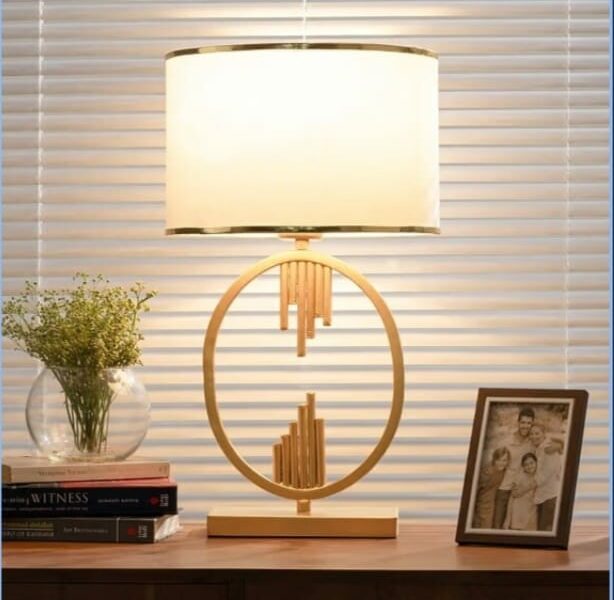Tips To Use Lights & Lamps For Your Home

Lighting as one of the many important interior design elements. Apart from its primary purpose of illuminating the space, lighting, when well planned, can transform the aesthetics from ordinary to extraordinary. So before you rush to buy lights and lamps, take your time and plan it the right way. Here are a few tips for using lights and lamps effectively.
Know the Different Types of Lights
- Ambient lighting: It is also known as general lighting and provides uniform illumination across the room. It is the main source of light at night and is the foundation lighting layer and the first one you turn on when you get into a room. It is typically track lighting, recessed or wall-mounted lights or flush-mount fixtures.
- Task lighting: As the name indicates, it is made to illuminate a specific area to accomplish a specific task. One of the examples of task lighting is a table lamp online which is made for working or reading.
- Accent lighting: It is used to accentuate or draw attention to particular items like artwork or sculpture. This is done to focus the light on the object using a downlight, wall-mounted or track lighting fixture.
- Decorative lighting: This adds a stylish touch to the decor and enhances the aesthetics of the space. Though it has a decorative function, it can also be an accent or task lighting. Decorative lighting can be in the form of floor or table lamps, pendant lights, or wall scones.
Consider The Purpose Of The Room
Each room in a house needs different lighting as per the function and purpose it serves. Consider how you plan to use the room, the activities that you do and the ambience you want. Most rooms need a combination of all the above different types of lighting. For instance, the dining room and kitchen are the hubs of any home and are used for more than cooking and dining. The home office is also a place for meeting friends as well as working productively. So when it comes to lighting these spaces you will need task and ambient lighting to brighten the work areas and recessed ceiling lighting for general light. Choose table lamps online and decorative lights for the home office for task lighting and ambient lighting. For open-plan rooms that serve multiple purposes, dimmers are a good choice, allowing you to control the light levels and adjust the room atmosphere accordingly.
Highlight The Space
Decorative lights are a great way to amplify and accentuate the room’s shape and dimensions. Use multiple light sources and place them strategically around the room to make the space feel bigger than it is. Do not rely on a single pendant or any other source of light. This will create a concentrated light pool in the middle, leaving the other areas of the room gloomy and dark. It also makes the room look smaller. To make the space appear wider, choose living room lamps in the corners or use a technique called wall washing that indirectly illuminates the wall in a uniform and equal way. Use backlighting behind a mirror or headboard or downlighting the shelves to create an illusion of space and depth. Choose to have long pendants to emphasise vertical space and distract from the small floor space. If you have larger rooms, choose cluster lighting to break down the space and create functional areas for reading, watching TV, etc and also to make the space feel cosy.
Choose A Layered Approach
Some of the best interiors are those that have multiple layers of lighting to add an aesthetic appeal. To do this, choose to have multiple lighting types in every room, between accent lighting and ambient task lighting. Choose table lamps, floor lamps, wall scones, ceiling lights, etc, to illuminate the space with different intensities and different heights to create a dynamic and flexible space. Each lighting offers a valuable and unique function as well as intensity of light. When combined, they offer a unique life to the space. When layering the lights, start with a base layer of ambient lighting, then add task lights and top it with decorative and accent lights. Light fixtures create visual interest and also serve as great design elements for the overall style of the room.
Choose The Right Fixture Size
This basic rule applies even to decorative lights like chandeliers and pendants. It is important to get the right scale and size, as it can make or break the look. To calculate the size of the fixture on the size of the room, determine the width and length of the room and the sum of it should be the light fixture diameter. For instance, if your bedroom is 10 feet * 8 feet, then the statement light fixture diameter is 18 inches. Then comes the height; as a rule, there should be a distance of at least 30 inches from the top of the dining table and the bottom of a pendant light.
Other Tips
- Create a focal point: Add a large chandelier or a pendant light to create a focal point. Hang it over the centre to draw focus and make the space inviting.
- Maintain symmetry: Create symmetry with lighting using table lamps for the bedroom in pairs on either side of the bed or wall lights on both sides of a statement mirror or artwork.
- Do not overdo: Overdoing lighting does not look good and too much light gets uncomfortable. Choose to have the right balance of light so that it does not strain the eye.
Light is one of the key elements that affect the appearance of the room. These lights come in many shapes and designs, choose the best one based on the above tips so that it enhances your decor. Whether you want to plan a whole home makeover or improve the lighting of a specific space, explore options at Wakefit that complement your decor.





